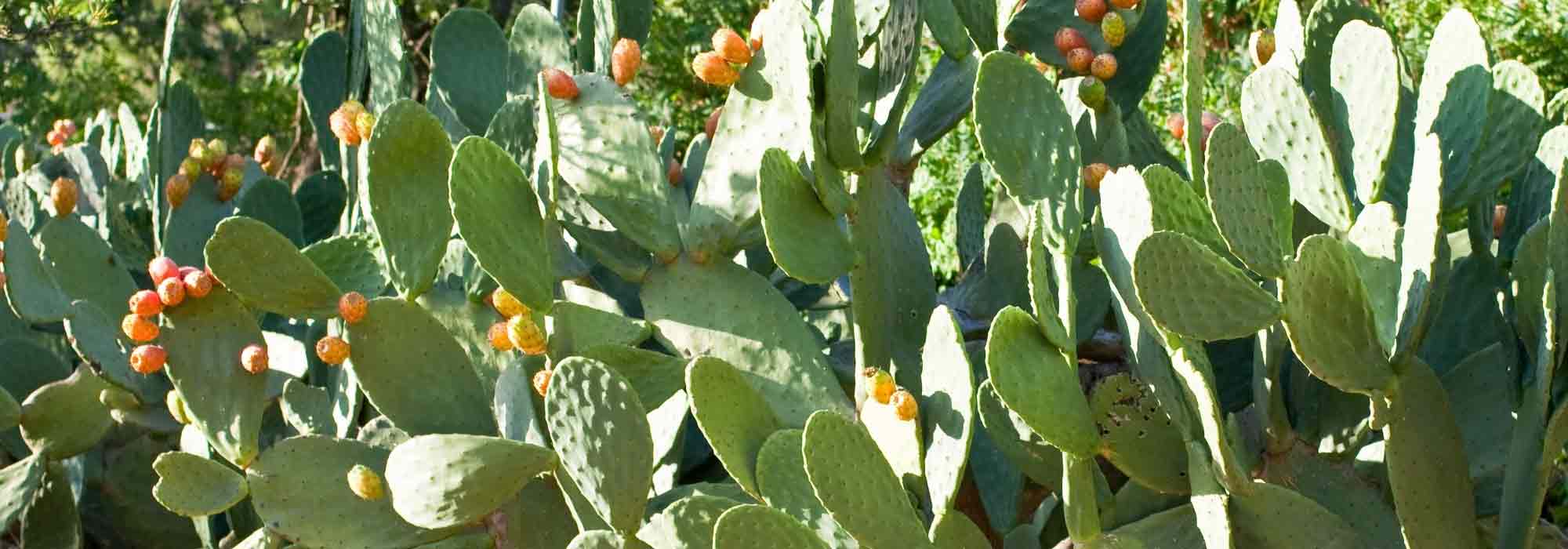
Which Opuntia to plant according to your region?
Discover the hardiest varieties suited to your garden.
Contents
The Opuntias, also known as prickly pears, are succulent plants that store water in their cladodes to withstand drought. They are primarily found on the American continent as well as around the Mediterranean. Prickly pears are cultivated mainly for their ornamental qualities and especially for the fruits known as figs of Barbarie, produced by the Barbary fig (Opuntia ficus-indica) and the Indian fig (Opuntia humifusa). These two Barbary figs, native to North America, also possess medicinal properties and serve as a source for obtaining carmine, a natural deep red dye. Originating from arid regions, Opuntias are drought-resistant. Despite their cactus-like appearance, most Opuntias can be planted in gardens in our temperate regions. Indeed, some Opuntias can withstand very low temperatures, dropping below -20 °C.
On this advice sheet, we offer a selection of different Opuntias varieties to successfully install depending on the region where you live.
You live around the Mediterranean coast.
You are in USDA hardiness zone 10 where cold days are rare and warm days are frequent. You can plant your Opuntias in the ground. These prickly pears are very hardy and capable of withstanding the Mediterranean climate (heat, cold, rain, and wind). For planting Opuntia in the ground in the colder areas of the Mediterranean hinterland, choose a raised position in full sun. The substrate should be light and draining, made of gravel and stones.
L’Opuntia microdasys is a small prickly pear that produces a succession of tiny rounded green pads without thorns, but punctuated with small tufts of irritating decorative yellow hairs, called glochidia. The plant frequently flowers in the ground under the Mediterranean climate. It withstands short frosts down to -2 °C when kept dry. A cold wintering with good sunlight promotes flowering.
Opuntia scheeri features pads covered in golden thorns that are relatively non-pungent. Very hardy, like many opuntias, it easily tolerates heat and cold down to -15 °C.

Prickly pears are extremely decorative in the garden (left O. microdasys; right O. scheeri)
Once established, Opuntias grow quite quickly if conditions are suitable. Over time, they can reach significant sizes.
⇒ Caution: Opuntias should always be handled with sturdy gloves or held with several layers of newspaper. Also, be careful to handle them in the absence of wind, as you could inhale them. The glochidia are tiny, brittle barbs that embed themselves in the skin and clothing in large quantities as soon as they are brushed against. To remove these spines, apart from using tweezers, one can use tape, chewing gum, or rub vigorously with soap.
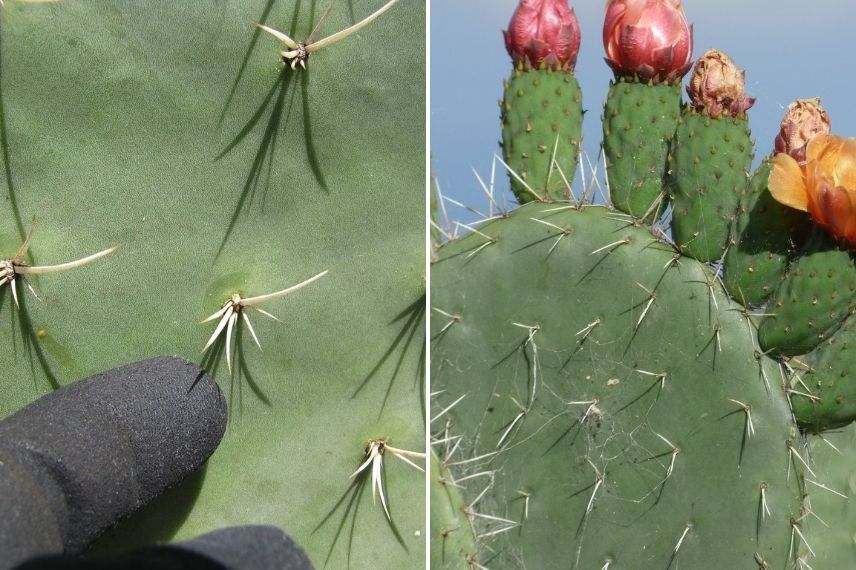 Wearing gloves and protective gear is recommended when handling Opuntias
Wearing gloves and protective gear is recommended when handling Opuntias
You live in the southwest basin.
You experience a fairly dry summer and a rainy winter. In this USDA zone 9, where average annual temperatures are quite high (12.5 °C) and the number of cold days remains low, Opuntia can be grown in the ground in perfectly drained soil. Choose a sunny location sheltered from strong winds and situated on a slope to ensure good water drainage. Opuntia are sensitive to heavy soils that retain water. Improve drainage by adding coarse sand, gravel, or stones, or by planting on a mound.
Opuntia atrispina is a medium-sized cactus that captivates with its spring flowering in changing colours, absolutely delightful. It forms a fairly low, well-branched bush, made up of circular pads, bluish in colour, which bear short white prickles with red and black bases around their edges. Its flowering is early and multicoloured in shades of cream, yellow, salmon, pink, and red, followed by the production of beautiful, edible red fruits. This “cactus” is hardy down to -12 °C in perfectly drained soil. It finds its place in a large rock garden. When planted in a dense hedge, Opuntia atrispina will create a first-rate low defensive hedge.
The Opuntia microdasys ‘Caress’ is a spineless version of the famous Opuntia microdasys. This variety thrives easily in pots, requiring no maintenance. Hardy down to -5 °C, it tends to show signs of necrosis. Flowering occurs in June-July, under favourable conditions. The very pale yellow to yellowish-white flowers consist of fine, translucent petal textures. They appear around the edges of the pads, mainly towards their tips.

The Opuntia microdasys ‘Caress’ is valued for its hardiness and spineless pads.
The Opuntia lubrica is a cold-resistant prickly pear variety that withstands frost down to -15 °C in dry soil. The plant, wider than it is tall, is characterised by a succession of modestly sized colourful pads, often devoid of thorns, but punctuated by small tufts of yellow hairs or glochidia that turn rusty, decorative, yet irritating. The plant flowers in spring, offering delicate bright yellow flowers. In favourable climates, they give way to lovely small bright red fruits. This Opuntia thrives easily in pots or in the ground, in a very well-draining substrate, requiring no special maintenance.
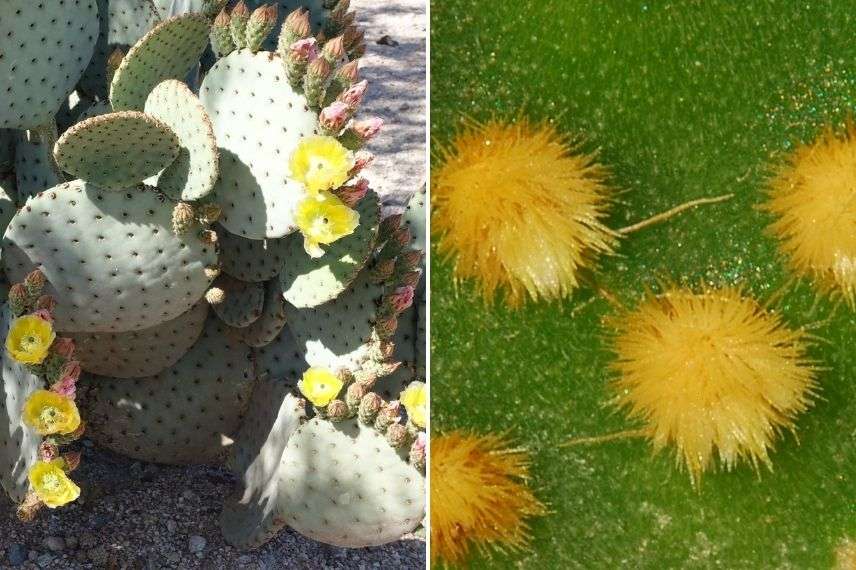
The Opuntia lubrica or rufida has no thorns, but equally irritating glochidia.
The ‘Opuntia cyclodes (formerly Opuntia engelmannii var. cyclodes) is a prickly pear variety whose robust appearance matches its exceptional cold resistance down to -25 °C and to snow. This plant forms a bush with a tentacular appearance made up of thick, rounded “pads” armed with long, sharp yellow spines. In late spring, they are adorned with lovely yellow flowers that produce round, unpalatable purple fruits. Hardy prickly pears are grown outdoors, in the ground and away from pathways, allowing them to express freely the spirit that inhabits them, that of the desert landscapes of North America.
Discover other Opuntia
View all →Available in 1 sizes
Available in 1 sizes
Available in 1 sizes
Available in 1 sizes
Available in 1 sizes
Available in 1 sizes
Available in 1 sizes
Available in 1 sizes
Available in 1 sizes
Available in 1 sizes
You live in an oceanic climate or the extreme south-west.
In USDA Zone 8, cold days are few, with temperatures rarely dropping to -10 °C, but precipitation remains frequent in winter. You can rely on the Cylindropuntia imbricata or Opuntia imbricata, which is very hardy down to -15 °C without protection and drought-resistant. This strange cactus armed with long white thorns is a cousin of the Prickly Pear. This curious Opuntia with glaucous colour is adorned in early summer with ephemeral fuchsia flowers tinged with violet and a yellow heart, with petals as delicate as silk. Its growth is rapid, and cultivation in stony, well-drained soil poses no problems.
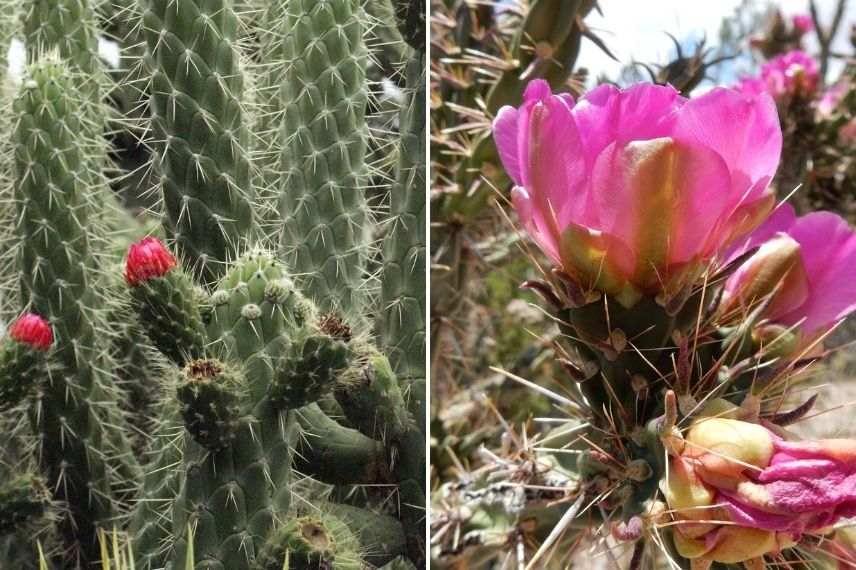
The fuchsia flowers of the Cylindropuntia appear in summer for a fleeting flowering.
⇒ Eric’s advice: The risk of rot is high for your Opuntias in autumn and winter. To prevent moisture, place a rain cover in early October and remove it in April.
Read also
10 hardy plants for an exotic dry gardenAnd everywhere else
You experience lively winters with periods of lasting and severe frost. It is in open ground that the Opuntia engelmannii var. rastrera, particularly hardy down to -20 °C, makes its appearance in the garden without protection. This variety forms a low, very spreading bush, with thick, rounded pads shaped like hearts, armed with sharp prickles. The spring flowering, featuring large, tender yellow or pale pink cups, fades to a beautiful orange hue. Next come round, edible purple fruits. This Opuntia is grown outdoors, in open ground, away from high-traffic areas for obvious safety reasons.
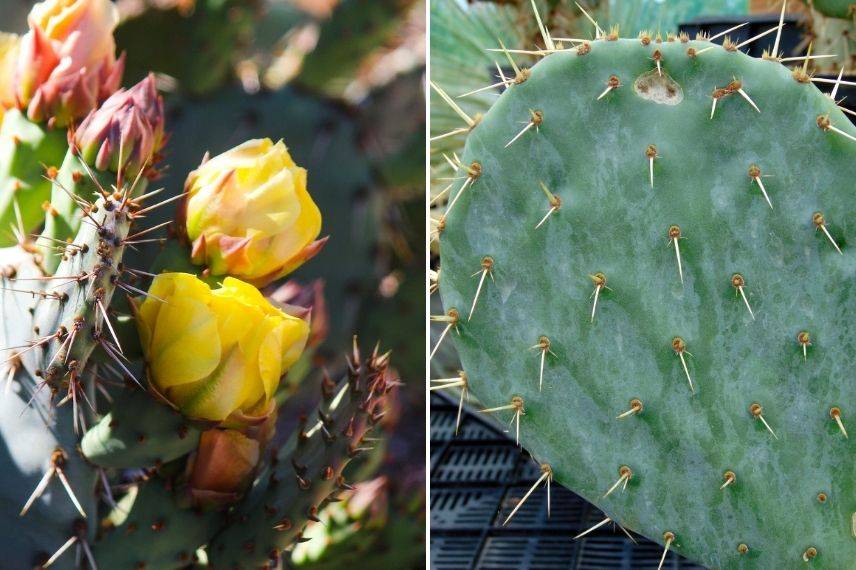
The Opuntia rastrera should be kept away from children, particularly for safety reasons.
The Opuntia phaeacantha ‘Mojavensis’ is a hardy cactus that withstands temperatures down to -25 °C. The bluish pads are large and thick, bearing white prickles with red bases. Its tender yellow flowers produce beautiful red, edible fruits.
The Opuntia compressa ‘Millevaches’ or Opuntia humifusa is a lovely spineless variety with exceptional hardiness around -23 °C, but it can tolerate even colder conditions in well-drained soil. It forms a wide cushion of small, fleshy pads, bluish-green in colour, that spread across the ground. In spring, it is adorned with small lemon-yellow cup-shaped flowers, followed by numerous dark red, edible fruits. This prickly pear is an excellent rock garden plant to be grown exclusively in the garden. It will adapt to all our regions, even in the mountains, as it fears neither cold, dryness, nor snow.
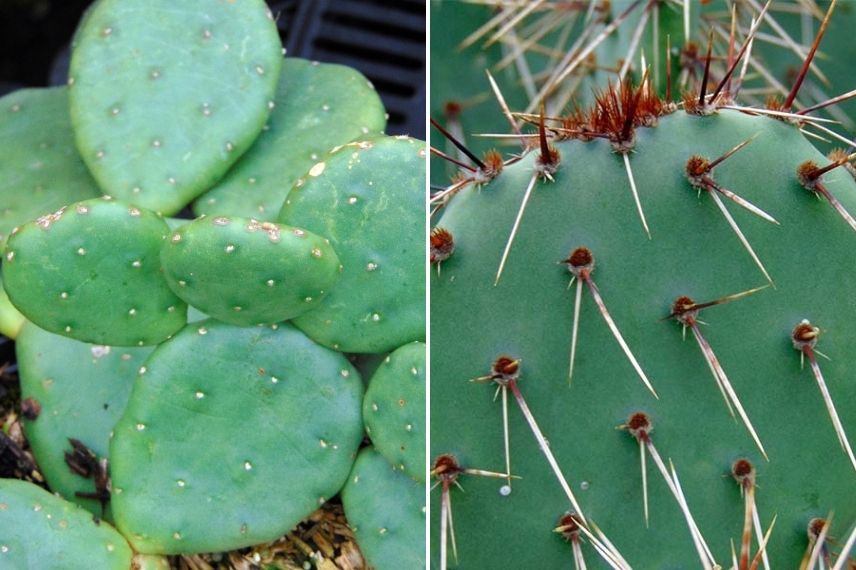
Two opposing opuntias: on the left, the inermous Opuntia Millevaches and on the right, the Opuntia phaecantha.
⇒ Eric’s advice: In all other situations where winters may be harsher, with longer and stronger frost periods, you should grow your Opuntia in a pot. You will still enjoy its long summer flowering, but you will need to winter it, ideally in an unheated conservatory or a bright frost-free space. In spring, it will be possible to take your Opuntia outside, gradually exposing it to the sun.
- Subscribe!
- Contents

































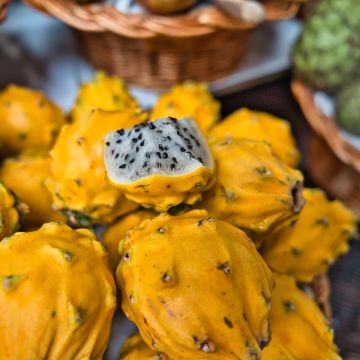
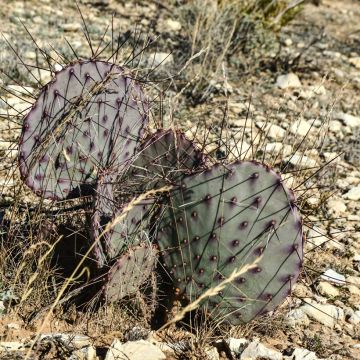



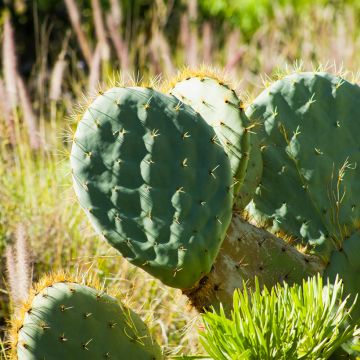


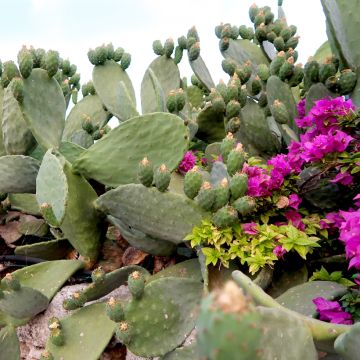
Comments